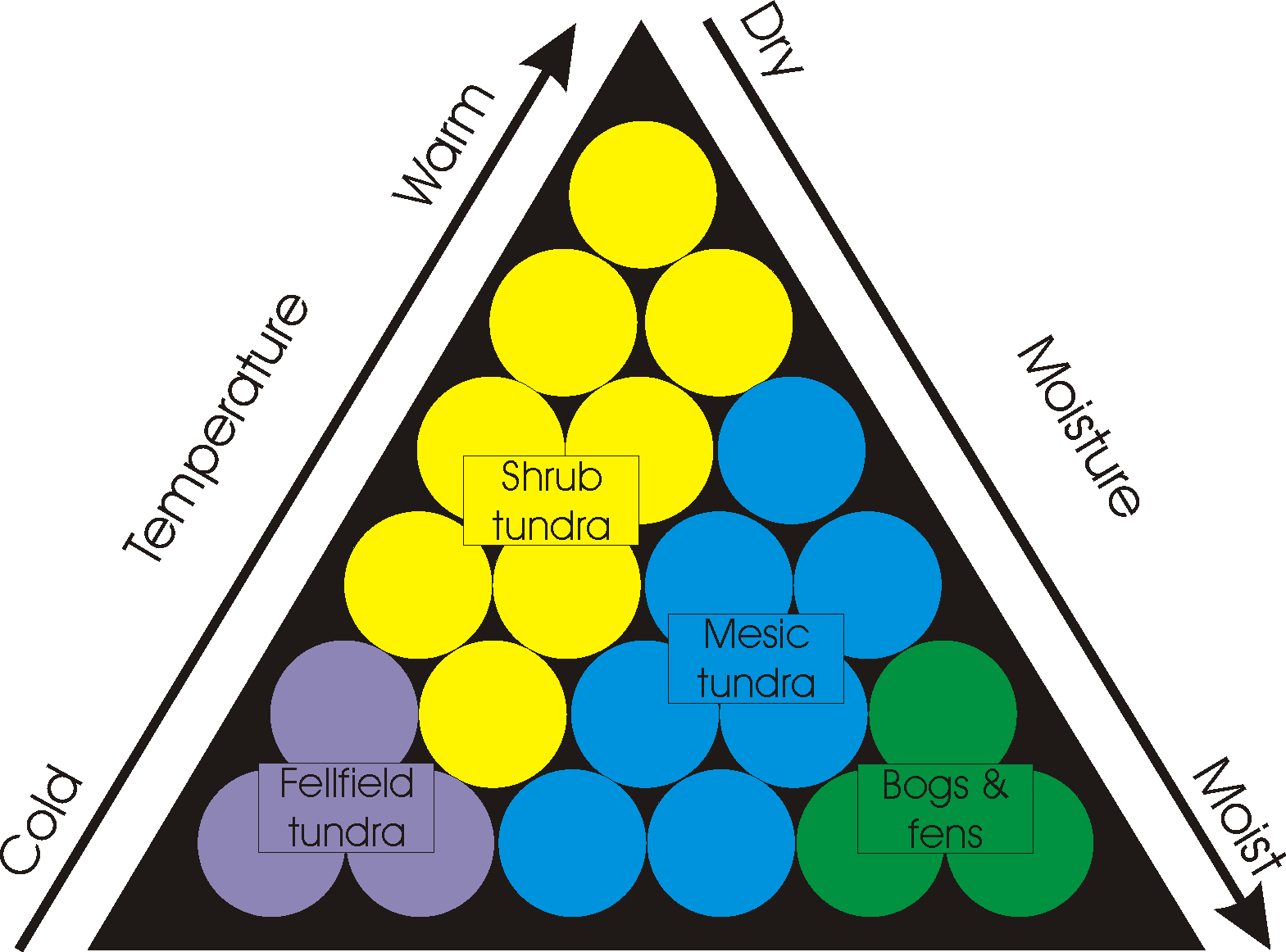
Reconstruction of the paleoenvironment of the Bering Land Bridge depends on one thing, evidence. This evidence includes ungulate hoof morphology, fossil pollen, faunal and insect assemblages, and preserved fragments of the landbridge.
Controversies: The landscape of Beringia The following list are the paleoenvironments that have been suggested to describe the Bering Land Bridge during the late Wisconsin glaciation. These paleoenvironments range from dry to wet landscapes.
Steppe environment The steppe environment is a vast semiarid grass-covered plain, that is usually lightly wooded and dry. This type of environment can be seen today in central Europe and Siberia. Beringia was first considered a steppe environment.
Tundra-steppe The tundra-steppe is therefore a mixture of some grass vegetation, a few shrubs, and low lying-vegetation such as mosses and lichens. The evidence that supports this theory is related to current floral distribution, and hoof morphology (Hopkins, 1998). Trees are currently uncommon between Siberia and Alaska, which suggests that the land bridge was unforested, the same steppe plants can be found in both Siberia and Alaska, and the foot and hoof morphologies of the migrating Pleistocene ungulates indicate a hard substrate instead of the soggy ground that we see in the rest of Beringia today. A tundra-steppe mosaic was later suggested because the fossil assemblage discovered may not represent the true assemblage or stratification of fauna due to the proccess of thanatacoenoses, which is the transport, redistribution, and reworking of fossils (Schweger & Habgood, 1976).
Arctic-steppe It has also been suggested that the land bridge was an arctic-steppe environment. The arctic-steppe is analogous to Africa's Serengeti Plain. The Serengeti is a very productive grass landscape that supports herds of prey and predators quite like what we see from the fossil assemblage of the Pleistocene fauna. The arctic-steppe hypothesis suggests a very productive vegetation that can support many animals.
Polar desert The polar desert describes a very unproductive and dispersed vegetative landscape. Fossil pollen from lake sediments was relatively unabundant, and indicated that there were few shrubs. So how did the animals survive if there was little vegetation? This leads us to the Productivity Paradox.
Productivity Paradox The productivity paradox expects that there must have been a very productive vegetation on the land bridge that could sustain the migration of unusually large animals, and a diverse fauna. Fossils indicate that mammoth, horse, and bison (the characteristic triad of dominant animals), musk-ox, caribou, mountain sheep, and ground squirrels were present in Beringia during the last cold stage of the Pleistocene. Remnants of the land bridge may offer some clues as to how these animals managed to survive in an apparently unproductive landscape.
Recent Evidence
Remnant Landbridge A piece of the northern coastal plain of the Seward Peninsula was discovered preserved under a volcanic covering (called a tephra) that erupted from Devil Mountain at this time (Goetcheus et al, 1994). This remnant is quite large, about 1000 km², and has provided an precise picture of the paleolandscape. The paleosurface was vegetated with sedge or grass that grew scattered around short willow and mosses. There was also evidence of meadow herbs. The layer of vegetation (the paleosurface) covered by tephra was overlain and underlain by a mixture of frozen loess, which is windblown silt or sand. Permafrost above the vegetated layer prevented bacterial decay of the plants. Hummocks, micro-habitats of mounds and depressions formed by freeze-dry cycles, indicated that there was seasonal waterlogging and dessication. Putting all of this information together provided a picture of the landscape. There was a mosaic of moist, meadowy, and dry landscapes in a windy environment consisting of dry summers, and heavy precipitation in the spring and fall. Soil froze in the winter. In response to the productivity paradox, the land bridge was probably adequately productive to support the Pleistocene fauna.
Palynology and Insect Assemblages Other research has shown that the vegetation in most of the Beringian landscape was the same as modern artic Alaska. The landscape was a mesic-shrub-graminoid tundra composed of sedges, grasses and other herbs, mosses, and birch and willow shrubs with vegetated ponds (Elias, 1995). Vegetation was different in the uplands and lowlands due to the differences in moisture, drainage, temperature, insolation, and wind. Uplands were drier and colder, and the lowlands supported bogs and fens (Elias, 1995).


